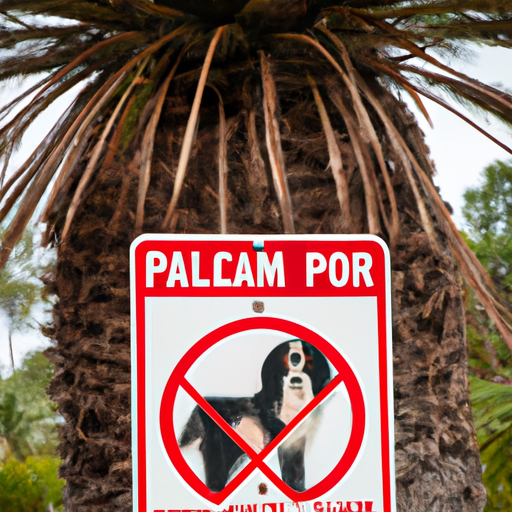As a dog owner, it is your responsibility to ensure that your furry friend is safe, healthy, and happy. One of the potential dangers lurking in many homes is the sago palm. This popular houseplant is highly toxic to dogs, and ingestion can lead to severe illness or even death. This comprehensive guide aims to help you understand why sago palms are dangerous and how to keep dogs away from these potentially deadly plants.
Table of Contents
- Understanding the Danger of Sago Palms
- How to Identify a Sago Palm
- Keeping Dogs Away from Sago Palms
- What to Do If Your Dog Ingests a Sago Palm
- Frequently Asked Questions
Key Takeaways
- Sago palms are highly toxic to dogs.
- It’s crucial to identify sago palms and remove them or keep them out of your dog’s reach.
- Training, using deterrents, and providing safe alternatives can help keep your dog away from sago palms.
- Immediate vet care is necessary if your dog ingests a sago palm.
Understanding the Danger of Sago Palms
Sago palms, despite their name, are not true palms but are cycads, ancient plants that predate dinosaurs. They are popular in landscaping and as houseplants due to their unique and attractive appearance. However, all parts of the plant are toxic to dogs, with the seeds (or “nuts”) being the most deadly. The plant contains a toxin called cycasin, which can cause severe liver damage and neurological problems in dogs. Dogs that ingest sago palms often exhibit symptoms such as vomiting, diarrhea, lethargy, loss of appetite, and seizures. Without immediate veterinary care, the ingestion of a sago palm can be fatal. For more detailed information about the toxicity of sago palms, visit the ASPCA’s Animal Poison Control Center.
How to Identify a Sago Palm
Sago palms have a distinct appearance. They feature a dark, shaggy trunk and long, feathery leaves that arch out from the center of the plant. The leaves are dark green and glossy, and the plant produces a cone-like structure in its center. The seeds or “nuts” are orange or red and are often found in a cluster. If you’re unsure whether a plant is a sago palm, it’s best to err on the side of caution and keep your dog away from it. You can also consult a local nursery or use an online plant identification app for confirmation.
Keeping Dogs Away from Sago Palms
1. Remove or Relocate the Plant
The simplest and most effective way to keep your dog away from sago palms is to remove the plants from your property. If you’re attached to your sago palms or don’t want to disrupt your landscaping, consider relocating the plants to an area that your dog cannot access.
2. Train Your Dog
Training is a crucial aspect of keeping your dog safe. Teach your dog a “leave it” command and use it whenever they show interest in a sago palm or any other dangerous plant. Reward your dog for obeying the command to reinforce the behavior. You might find this article on how to train your dog to avoid certain areas helpful.
3. Use Deterrents
There are several commercial products available that can deter your dog from approaching sago palms. These include bitter sprays, which can be applied to the plant’s leaves, and motion-activated sprinklers. You could also consider using a dog-proof garden fence.
4. Provide Safe Alternatives
Dogs often chew on plants out of boredom, so providing safe alternatives can help divert their attention away from sago palms. Provide plenty of toys and engage your dog in regular play and exercise.
What to Do If Your Dog Ingests a Sago Palm
If your dog ingests any part of a sago palm, it’s crucial to seek veterinary care immediately. Symptoms of sago palm poisoning can take several hours to appear, so don’t wait for signs of illness before contacting your vet.
- Remove any remaining plant material from your dog’s mouth.
- Do not induce vomiting unless instructed to do so by a vet.
- Take your dog to the vet immediately. If possible, bring a sample of the plant with you for identification.
- Follow your vet’s treatment instructions carefully.
Remember, time is of the essence when dealing with sago palm poisoning. For more information, you can read this article on how to handle pet poisoning emergencies.
Frequently Asked Questions
Are all parts of the sago palm toxic to dogs?
Yes, all parts of the sago palm are toxic to dogs. However, the seeds or “nuts” are the most poisonous.
What are the symptoms of sago palm poisoning in dogs?
Symptoms can include vomiting, diarrhea, loss of appetite, lethargy, and seizures. If you notice any of these symptoms, seek veterinary care immediately.
Can a dog survive ingesting a sago palm?
With immediate veterinary care, a dog can survive ingesting a sago palm. However, the prognosis depends on the amount of the plant ingested and how quickly treatment is started.
In conclusion, while sago palms can add beauty to your home or garden, the danger they pose to dogs cannot be ignored. By understanding the risks, identifying these plants, and taking preventive measures, you can keep your dog safe and healthy. For more information on dog health, you can check out this article on maintaining your dog’s health.



